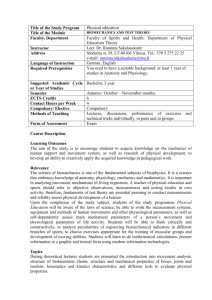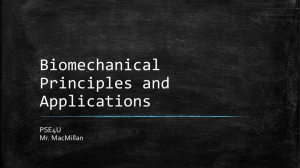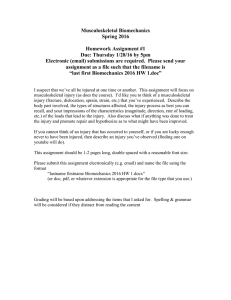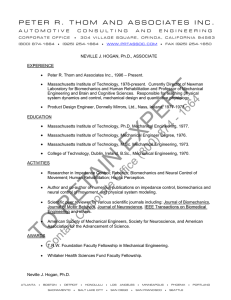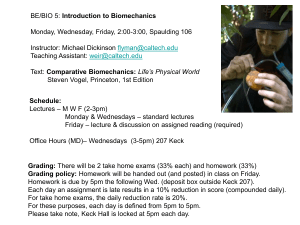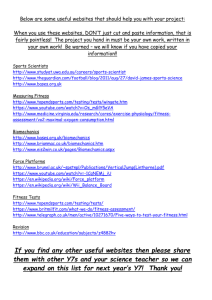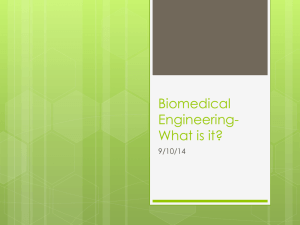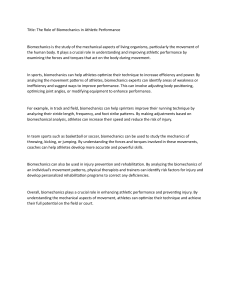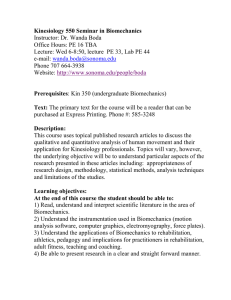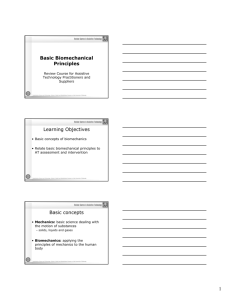sathyabama university
advertisement
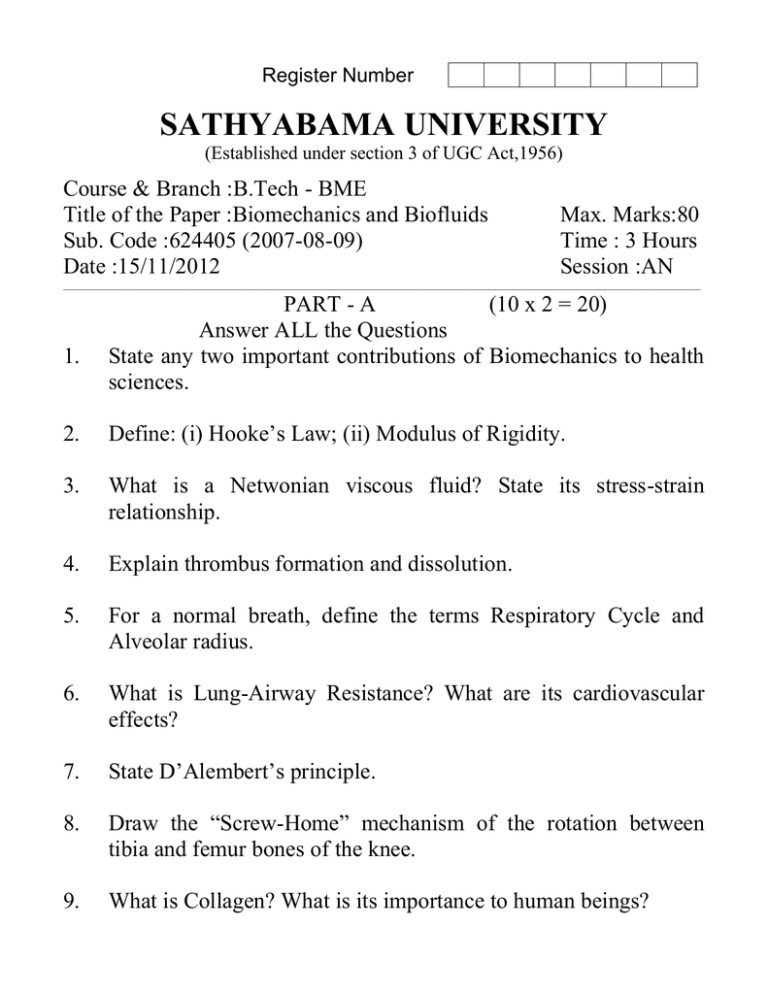
Register Number SATHYABAMA UNIVERSITY (Established under section 3 of UGC Act,1956) Course & Branch :B.Tech - BME Title of the Paper :Biomechanics and Biofluids Sub. Code :624405 (2007-08-09) Date :15/11/2012 Max. Marks:80 Time : 3 Hours Session :AN _______________________________________________________________________________________________________________________________ 1. PART - A (10 x 2 = 20) Answer ALL the Questions State any two important contributions of Biomechanics to health sciences. 2. Define: (i) Hooke’s Law; (ii) Modulus of Rigidity. 3. What is a Netwonian viscous fluid? State its stress-strain relationship. 4. Explain thrombus formation and dissolution. 5. For a normal breath, define the terms Respiratory Cycle and Alveolar radius. 6. What is Lung-Airway Resistance? What are its cardiovascular effects? 7. State D’Alembert’s principle. 8. Draw the “Screw-Home” mechanism of the rotation between tibia and femur bones of the knee. 9. What is Collagen? What is its importance to human beings? 10. State the difference between Acting and Elastin elastic materials. PART – B (5 x 12 = 60) Answer All the Questions 11. Explain the mechanical properties of a biomechanics system, highlighting the Stress and Strain principles. (or) 12. Discuss in detail a microstructure and types of bonding in solids. 13. Derive the constitutive equation of blood based on viscometric data and Casson’s equation (or) 14. What are the outstanding features of Red Cell Membrane? Describe an idealized view of a red blood cell membrane composite and derive the required equations. 15. Explain in detail the Pressure-Volume Curves of the Respiratory System. (or) 16. Describe the physics of Obstructive Lung Diseases and Restrictive Lung Diseases. 17. State the hypotheses of Cross-Bridge theory of skeletal muscles and derive the required equations. (or) 18. Explain in detail the biomechanics of the shoulder focusing on the geometry of the articulating surfaces, joint contact, and axes of rotation. 19. Discuss in detail the mechanical properties and tissue dynamics of Cancellous and Cortical Bone. (or) 20. State the reasons for accurate characterization of the mechanical behavior of soft tissues. Discuss the visco-elastic response of soft tissues under different test conditions.
